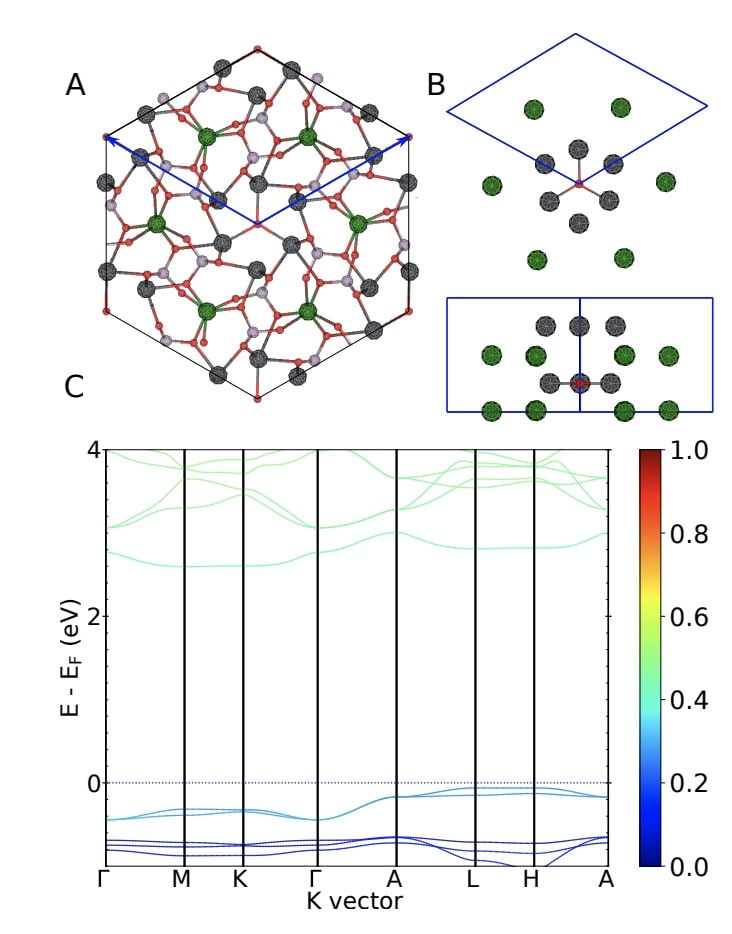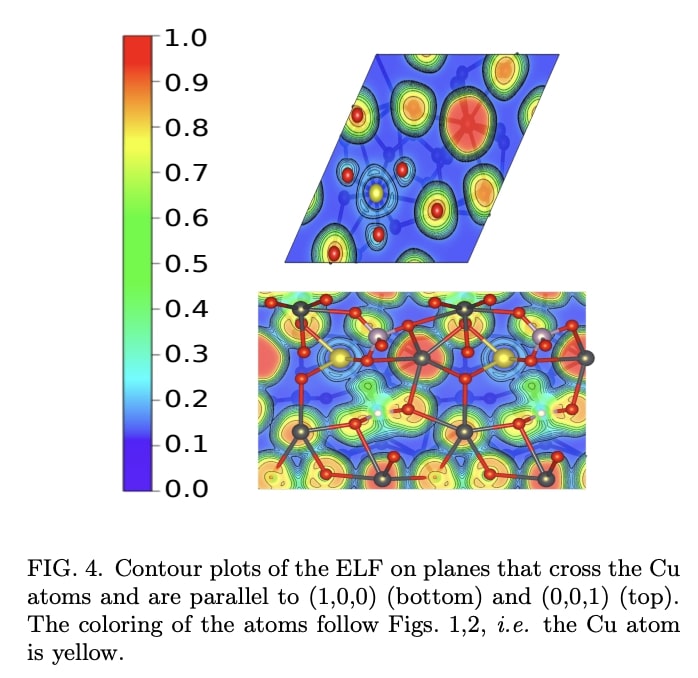Chilean researchers performed a DFT computational analysis of LK-99.
Chilean conclusions: The LK-99 material is a Copper-doped lead oxyapatite system. They studied, specifically the system CuPb9(PO4)6O, with two possible arrangements of the Cu atoms, forming a hexagonal or a triangular sublattice. They found the triangular arrangement to be energetically more stable. Regarding the magnetic order, the Cu atoms are spin-split, but the ferromagnetic and antiferromagnetic configurations are practically degenerated.
The system is metallic with two almost flat bands at the Fermi level, this band corresponds to Cu d-orbitals. These bands are degenerated at the Γ − A line. The electron localization function (ELF) shows almost no covalent bonding of the Cu atom. The frozen phonon calculation shows a remarkable impact on the electron-phonon coupling. Especially those flat bands of Cu atoms at the Fermi level. Due to the staggering impact of the frozen phonon, more calculations are necessary to explored this phenomenon with more details.


Theoretical insight on the LK-99 material
Two recent preprints in physics archive (arXiv) have called the attention as they claim experimental evidence that a Cu-substituted apatite material (called LK-99) exhibits superconductivity at room temperature and pressure. If this proves to be true, LK-99 will be the holy grail of superconductors. In this work, we used Density-Functional Theory calculations to elucidate some key features of the electronic structure of LK-99. Although some aspects of our calculations are preliminary, we found that: i) in the ground state of the material the ferromagnetic and antiferromagnetic configurations are practically degenerated, ii) the material is metallic, iii) the Cu atoms seem to be hosts in the lattice with not covalent bonds to other atoms and supporting almost flat bands around the Fermi level, and iv) the electron-phonon coupling of these flat bands seems to be dramatically large.
J. Cabezas-Escares and NF. Barrera
Departamento de F´ısica, Facultad de Ciencias, Universidad de Chile, Santiago, Chile and
Center for the Development of Nanoscience and Nanotechnology (CEDENNA), Santiago, Chile
C. Cardenas and F. Munoz∗
Departamento de F´ısica, Facultad de Ciencias, Universidad de Chile, Santiago, Chile and
Center for the Development of Nanoscience and Nanotechnology (CEDENNA), Santiago, Chile
(Dated: August 3, 2023)

Brian Wang is a Futurist Thought Leader and a popular Science blogger with 1 million readers per month. His blog Nextbigfuture.com is ranked #1 Science News Blog. It covers many disruptive technology and trends including Space, Robotics, Artificial Intelligence, Medicine, Anti-aging Biotechnology, and Nanotechnology.
Known for identifying cutting edge technologies, he is currently a Co-Founder of a startup and fundraiser for high potential early-stage companies. He is the Head of Research for Allocations for deep technology investments and an Angel Investor at Space Angels.
A frequent speaker at corporations, he has been a TEDx speaker, a Singularity University speaker and guest at numerous interviews for radio and podcasts. He is open to public speaking and advising engagements.


I am working for quite some time on effective models for condense mater physics and thus keenly watching claims and counter claims for various exotic properties of condense matter.